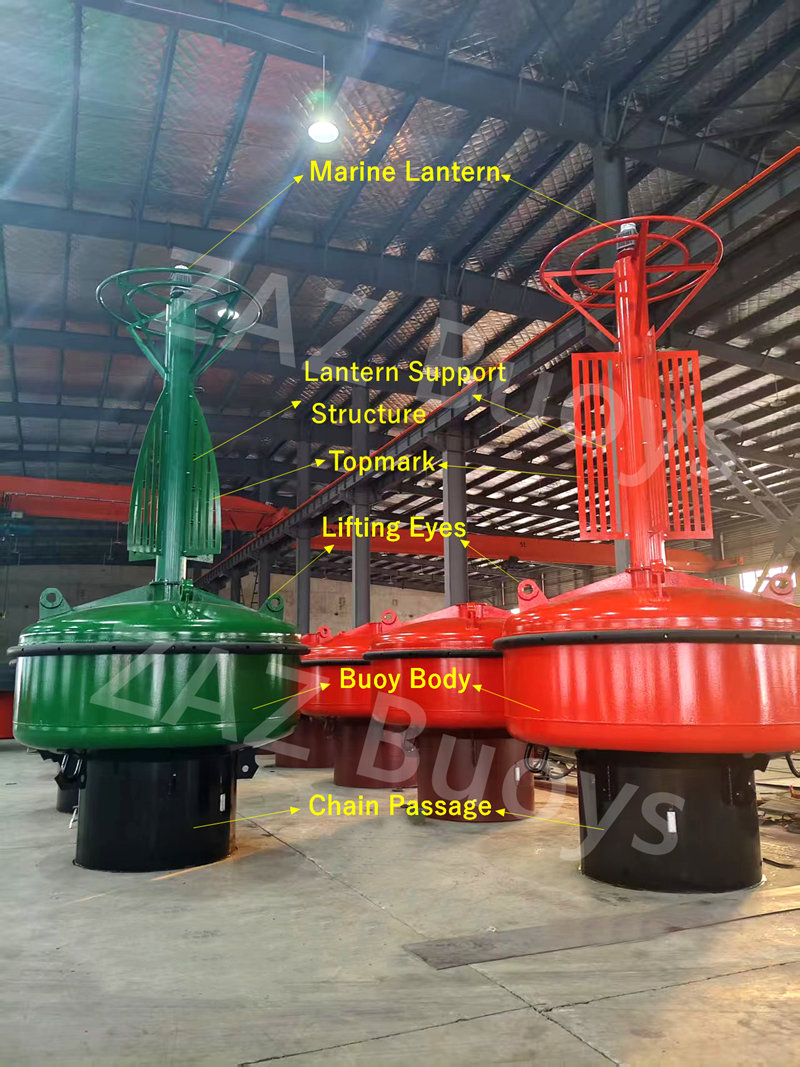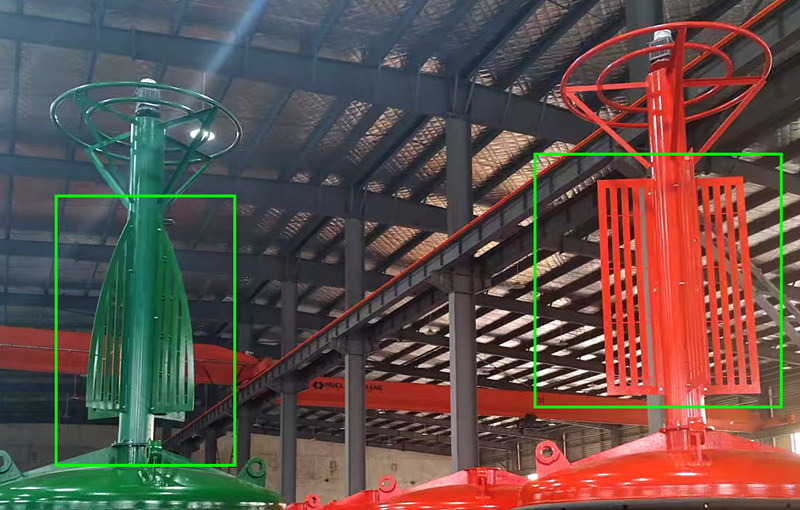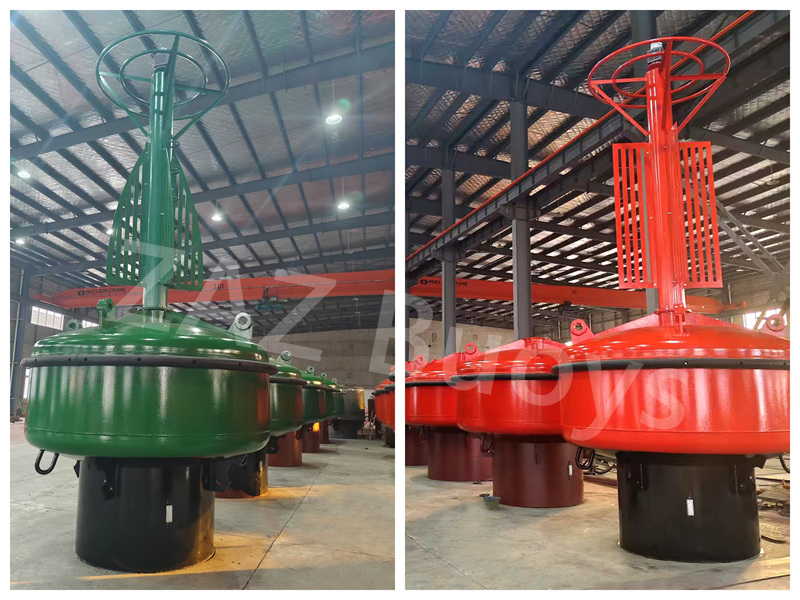Do you know what a mooring buoy is in the marine environment? Mooring buoys are quite essential for offshore and port operations. In this article, you will gain a complete understanding of mooring buoys — what they are, how they work, and why they are essential for maritime operations.
What is A Mooring Buoy?
A mooring buoy serves as a secure and stable anchoring point for vessels or offshore structures, eliminating the need for ships to drop their anchors onto the seabed. It provides safe and reliable temporary or long-term mooring points at anchorages, ports, and offshore working areas, making them ideal for a wide range of vessels, including oil tankers, workboats, fishing vessels, and yachts. Below is a picture of the mooring buoy we exported, with some annotations to highlight its main components.

Mooring Buoy Components
1) Marine Lantern
It emits light at night, allowing ships to identify navigation marks in the dark and ensure navigation safety. Meanwhile, different colors of lights represent different meanings, for example, (under the IALA A-zone standard), red represents the starboard buoy, and green represents the port buoy. In addition, these lights have specific flashing frequencies. Therefore, to correctly identify navigation lights, you must pay attention to the lights' color and flashing rhythm.
2) Lantern Support Structure
The support frame from the buoy body to the navigation light mainly supports the navigation light to prevent tipping and bear weight. It is integrated with the top mark in design, but is different in function.
3) Topmark
It is used to assist in navigation mark identification and help sailing ships recognize the type or direction of the buoy through the mark's shape at a long distance. The international standard (IALA Maritime Buoy System A-zone standard) requires that the top of the port buoy (Green Buoy) is generally a single green cone facing upward or a similar design. The top of the starboard buoy (Red Buoy) is a single red cylinder or flat plate structure. Safe water buoys, danger buoys, isolation buoys, etc., also have different topmarks (such as double balls, double cones, etc.).

On the green buoy: the spiral metal structure (like a rotating, hollow cone), which is the topmark commonly used for the Green Lateral Buoy (left sign).
On the red buoy: the vertically arranged plate structure (flat plate or striped plate), which is the common topmark form of the Red Lateral Buoy (right sign).
4) Lifting Eyes / Pad Eyes
The small rings on the top or around the buoy are mainly used for lifting or mooring, such as lifting buoys, or hanging auxiliary equipment (anchor chains, ropes, etc.).
5) Buoy Body
Buoy Body: The red or green, drum-shaped, large buoy in the middle. The main function is to provide buoyancy and support the buoy as a whole to float on the water. It is usually made of steel (also PE or composite materials), sprayed with anti-corrosion paint on the surface, and the color follows the IALA standard (A zone: red left and green right).
6) Chain Passage
The black column under the float has an anchor chain passing through it. The anchor chain connects the buoy and the seabed anchoring device to ensure that the buoy does not drift away. It can also be designed with a built-in rotating device to prevent the chain from getting entangled.

Hope this article has provided you with valuable insights into mooring buoys. For more information and regular updates on buoy technology, please follow us on Facebook.
Our factory is equipped with advanced production lines and modern facilities, enabling us to manufacture high-quality mooring buoys with consistent performance and durability. With years of experience in marine product manufacturing, we strictly follow international standards such as IALA guidelines to ensure reliability and safety. If you need our mooring buoys, we are here waiting for your inquiry!